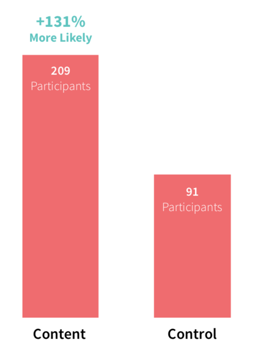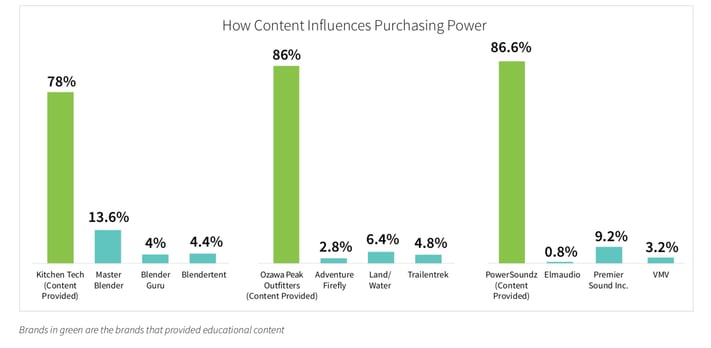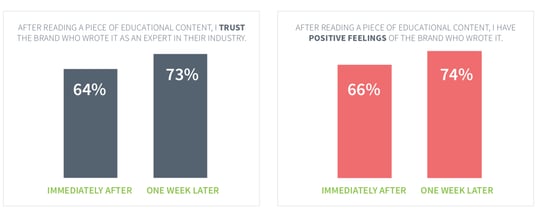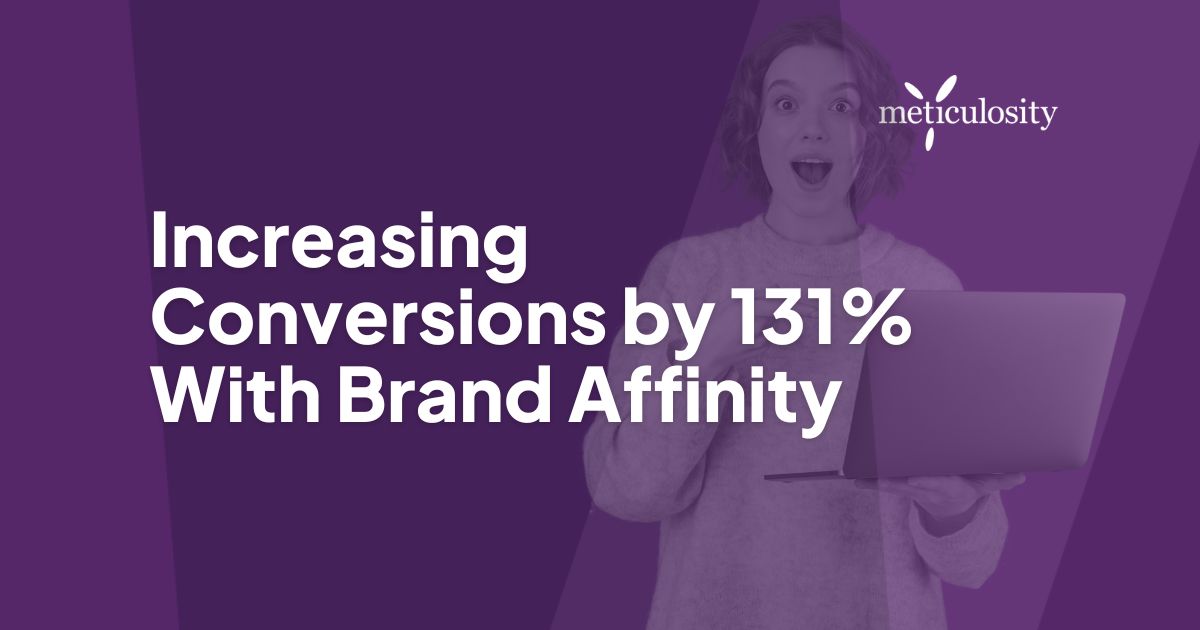Cart abandonment is a concern for retailers and one of the main reasons shoppers abandon their cart is a lack of trust in the website. There are a lot of things you can do to engender trust once a customer is close to making a purchase – trust pilot reviews and user experience in checkout can increase conversion by 67% by increasing perceived security – but how can you encourage people to trust your brand before they even add an item to their cart?
One great method to building trust in your brand is through providing useful and educational information during the consideration stage of the buyer’s journey.

Image Credit: Hubspot
A recent brand affinity study carried out by Conductor found that after reading educational or informational content from a brand, consumers were a staggering 131% more likely to buy from the brand than those who were not supplied with educational content.

Taking a closer look at the stats (below) we can see that around 78-86% of consumers served educational content indicated they’d purchase from the brand that gave them that content. Now, a lot of other things can influence brand affinity when it comes to ecommerce marketing – colors, language, and imagery all have roles to play – so we cannot discount these variables in playing a role even in this study. That said, the results are quite clear even when drilled down.

Being helpful matters with your content.
Being helpful matters immediately and in the long term. In this same study, one week after reading the educational content consumers were still 48% more likely than average to purchase from that brand.
Interestingly, there was an increase in brand trust over time too. One week after reading educational content, 73% of respondents trusted the brand versus 64% of respondents immediately after testing. Why do people trust you more after a week or two? This is probably something to do with the familiarity principle in Psychology. As our familiarity with a product (or thing) increases so does our preference to that thing – essentially, we like what we know. The more we know a product, the more we’ll like it.

A study a few years ago found that we actually look at brands in the same way we look at faces, so it makes sense that, like with people, we trust brands we’ve seen before and connected with.
So how can you produce content that’s trusted and educational and increase trust in your brand?
Create Buyer Personas
Research everything you can about the people you want to be attracted to your product – your ideal leads – and collate this information into a semi-fictional profile of an ideal customer. You may have more than one ideal customer, that’s great! Make more than one buyer persona. From your personas, you should be able to tell what problems and challenges your ideal customer is looking to solve, and know what content would be useful to them.
Research Keywords
Once you know your ideal customer, spend some time doing keyword research on their problems and challenges – what keywords are gaining the most month searches? Are there any long tail keywords that you could turn into a blog post? You can use Google Ads Keyword Planner and tools like Moz Keyword Explorer to look at this in more detail.
Campaign Planning
Plan your content ahead of time, taking a look at timely information (can you provide information about certain things ahead of major holidays or annual events?) and consider a multi-platform approach. For example, on Facebook native videos vastly outperform other types of content so you might transform what was originally a blog post list into a video summarizing the list for your Facebook audience.
Have some examples of how you’re using educational content as part of your marketing strategy? Let us know in the comments!







